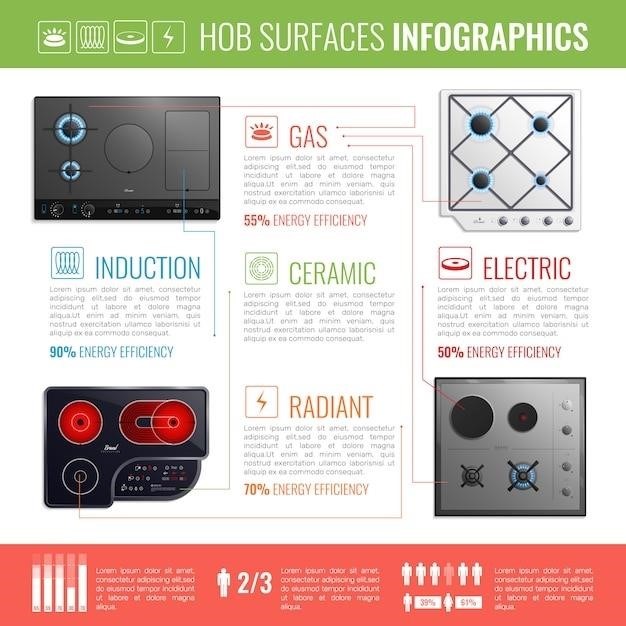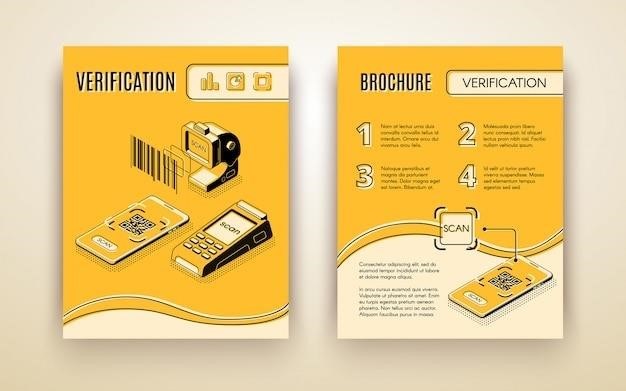E6000 Adhesive⁚ A Comprehensive Guide
E6000 is a versatile, strong adhesive bonding various materials like glass, metal, plastic, and fabric․ Ensure surfaces are clean and dry for optimal adhesion․ Apply a thin, even layer, pressing surfaces together and holding for several minutes․ Allow 24 hours for complete curing; initial bonding occurs within 4-8 hours․ Always test in an inconspicuous area first․
Surface Preparation for Optimal Adhesion
Proper surface preparation is crucial for achieving a strong, lasting bond with E6000 adhesive․ Begin by thoroughly cleaning both surfaces to be joined․ Remove any dust, grease, oil, or other contaminants that could interfere with adhesion․ A clean, dry surface is paramount․ For optimal results, consider lightly roughening smooth surfaces like glass or plastic using fine-grit sandpaper or a similar abrasive material․ This creates microscopic imperfections, providing more surface area for the adhesive to grip․ Wipe away any sanding residue before proceeding․ Remember, the cleaner and drier the surfaces, the stronger and more reliable the bond will be․ Thorough preparation ensures the adhesive’s full potential is realized, leading to a successful project․
Applying E6000⁚ Techniques and Tips
Applying E6000 requires a delicate touch to avoid excess adhesive․ Start by dispensing a small amount of adhesive onto one surface․ Using a toothpick or similar applicator, spread the adhesive thinly and evenly across the surface, ensuring complete coverage of the area to be bonded․ Avoid applying too much adhesive, as this can lead to excess oozing and a weaker bond․ For best results, apply a thin layer to both surfaces․ Once both surfaces are coated, carefully align them and firmly press them together․ Maintain pressure for a few minutes to ensure proper adhesion․ For larger or more delicate items, consider using clamps or weights to keep the surfaces in place while the adhesive cures․ Remember, a thin, even application is key to a strong and successful bond․ Work in a well-ventilated area, as E6000 has a strong odor․
Drying and Curing Times
E6000’s drying and curing times are influenced by several factors, primarily temperature and humidity․ While initial bonding strength is usually achieved within 4-8 hours, complete curing takes significantly longer, typically 24-72 hours․ Lower temperatures will extend the curing process, while higher temperatures will reduce it․ Optimal temperature for application is between 70°F (21°C) and 85°F (29°C)․ Humidity can also affect drying time; lower humidity generally leads to faster drying․ During the curing period, avoid disturbing the bonded surfaces to allow for optimal adhesion․ For projects requiring immediate use, be aware that the bond will not reach its full strength until the recommended cure time has elapsed․ Do not expose the bonded items to excessive stress or pressure before full curing is complete․

Working with Different Materials
E6000’s versatility extends to various materials⁚ metal, glass, plastics, fabrics, and more․ Success depends on proper surface preparation; clean, dry surfaces are crucial for optimal adhesion․ Always test a small, inconspicuous area before applying to the entire project․
Adhesives for Metal, Glass, and Plastics
E6000 excels as an adhesive for metal, glass, and various plastics, offering strong, durable bonds in many applications․ For optimal results with metal, ensure the surface is thoroughly cleaned and free from oils or grease․ A light roughening might improve adhesion on very smooth surfaces․ With glass, cleanliness is paramount; any residue can compromise the bond․ For plastics, test a small area first to ensure compatibility, as some plastics may not bond well with E6000․ Apply a thin, even layer to both surfaces, pressing firmly together and holding for several minutes to allow initial adhesion․ Avoid excessive adhesive application, as this can lead to oozing and a less robust bond․ Remember to allow sufficient curing time (24-72 hours) for maximum strength, especially in lower temperatures․ Always follow the manufacturer’s instructions for best results and safety precautions․
E6000 for Fabrics and Other Delicate Materials
While E6000’s strength is an advantage, its use with fabrics and delicate materials requires a gentler approach․ Always test on a hidden area first to ensure colorfastness and material compatibility․ For fabrics, apply a very thin layer to both surfaces, avoiding saturation․ Excessive adhesive can lead to stiffness or discoloration․ Gently press the surfaces together, using clamps or weights to maintain even pressure during the curing process․ This is crucial for a strong, flexible bond that prevents tearing or damage to delicate materials․ The curing time might be slightly longer for fabrics compared to harder materials; allow at least 24 hours for a complete cure․ Consider using a protective barrier (like parchment paper) to prevent the adhesive from staining or transferring to surfaces that might be easily damaged․ Remember to work in a well-ventilated area to minimize exposure to fumes․

Troubleshooting Common Issues
Poor adhesion often stems from unclean or damp surfaces․ Ensure surfaces are thoroughly clean, dry, and properly prepared before application․ E6000’s limitations include its incompatibility with certain plastics and porous materials; always test first․
Addressing Poor Adhesion Problems
If E6000 isn’t adhering properly, several factors could be at play․ First, ensure the surfaces are meticulously cleaned․ Dirt, grease, or oils will significantly impede adhesion․ Use a suitable degreaser or solvent to remove any contaminants․ Thoroughly dry the surfaces before applying the adhesive; even slight dampness can prevent a strong bond․ For very smooth surfaces, lightly roughening them with sandpaper can create a better mechanical grip for the adhesive to hold onto․
Another common cause is applying too thick a layer of adhesive․ A thin, even coat is crucial․ Excess adhesive can prevent proper contact between the surfaces and weaken the bond․ If you’ve used too much, carefully remove the excess before pressing the surfaces together․ Temperature also plays a role; E6000 works best at room temperature․ Extremes of hot or cold can affect curing time and adhesive performance․
Finally, consider material compatibility․ E6000 is effective with many materials, but not all․ Some plastics, for instance, may prove challenging․ If you are unsure, always test the adhesive on a small, inconspicuous area first before applying it to the entire project․
Understanding E6000’s Limitations
While E6000 boasts impressive adhesive strength and versatility, it’s crucial to understand its limitations․ It’s not suitable for all materials․ Certain plastics, particularly some types of polyethylene and polypropylene, may not bond well․ Always test a small area first to assess compatibility․ Additionally, E6000 is not designed for applications requiring high heat resistance or exposure to prolonged, extreme temperatures․ While it can withstand temperatures up to 150°F (66°C), prolonged exposure to higher temperatures may weaken the bond․
The adhesive’s flexibility, a key advantage in many applications, can also be a limitation․ For projects requiring a rigid bond, E6000 might not be the ideal choice․ It’s also important to note that the curing time can be affected by environmental factors․ Lower temperatures will prolong the curing process, potentially delaying the achievement of full bonding strength․ Finally, while E6000 is a strong adhesive, it’s not indestructible․ Excessive stress or impacts on the bonded surfaces could compromise the bond over time․ Always consider the intended use and potential stresses before applying E6000․
